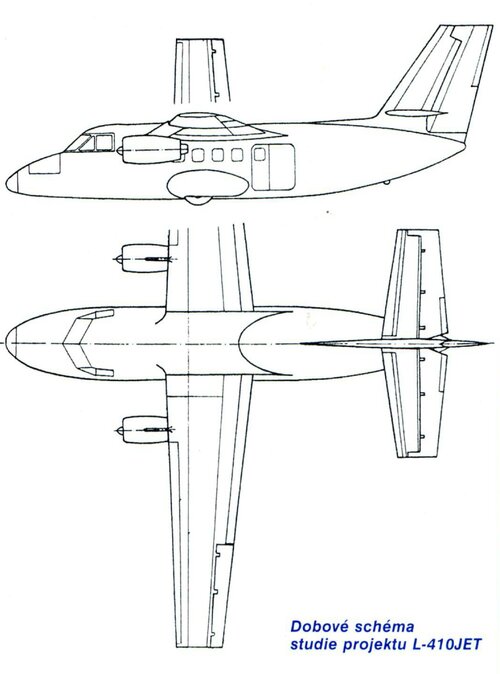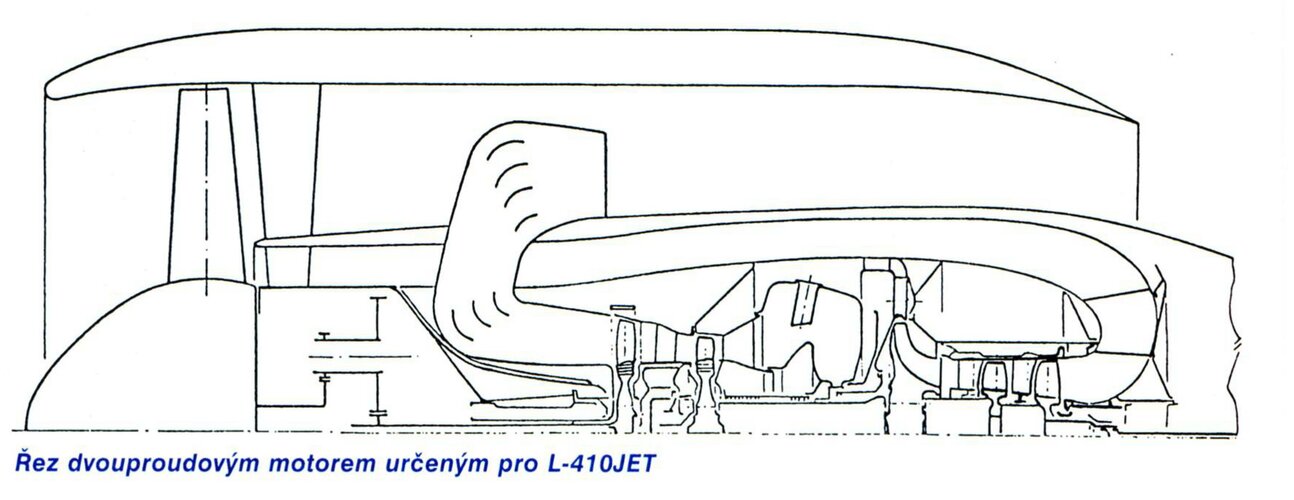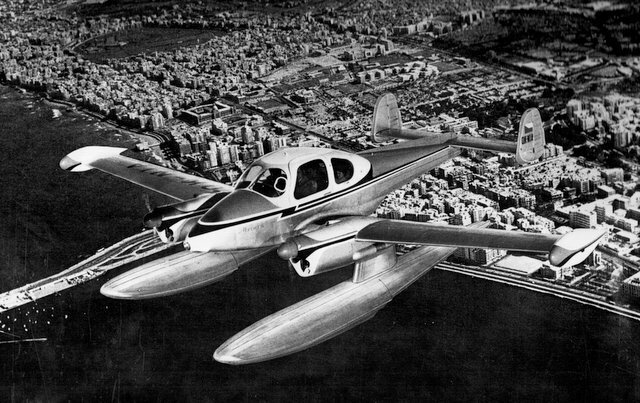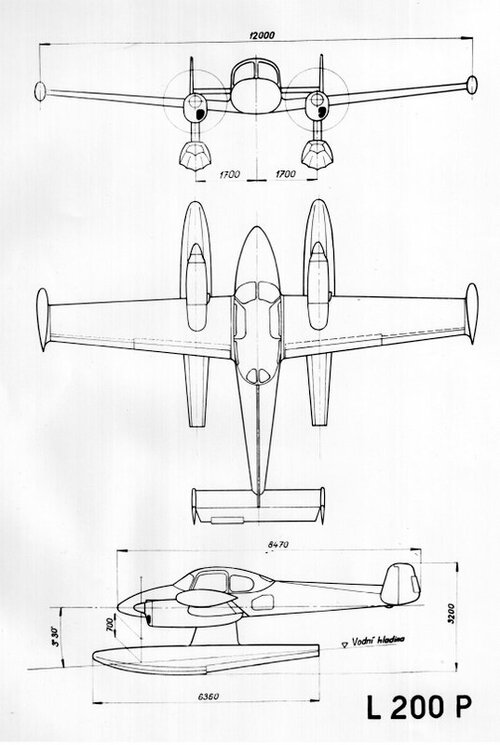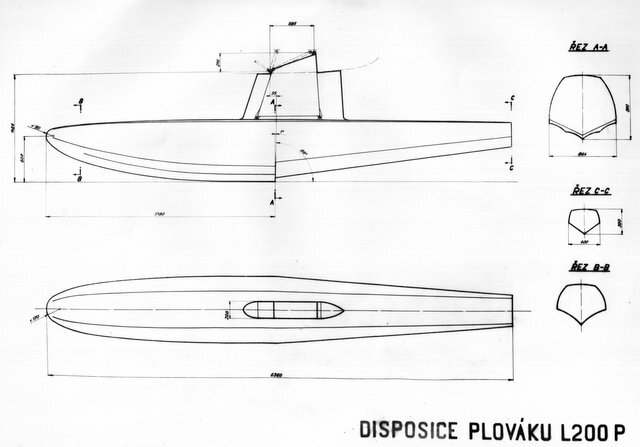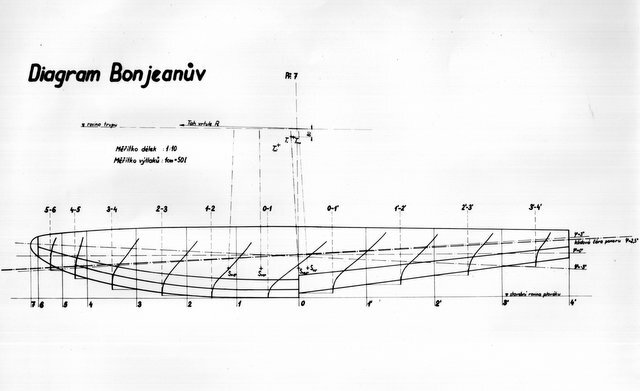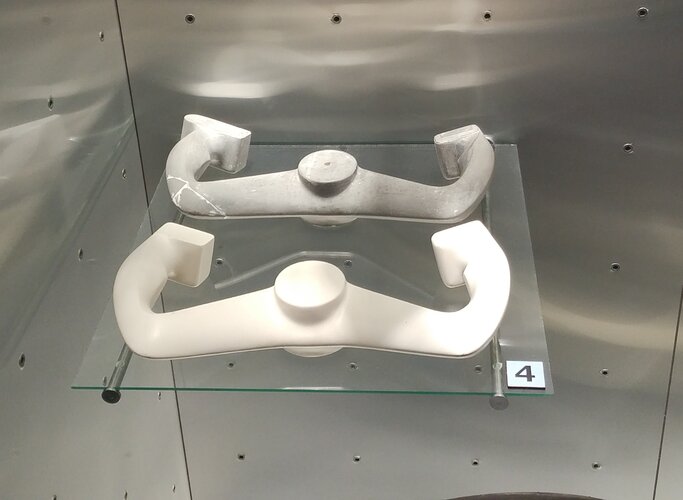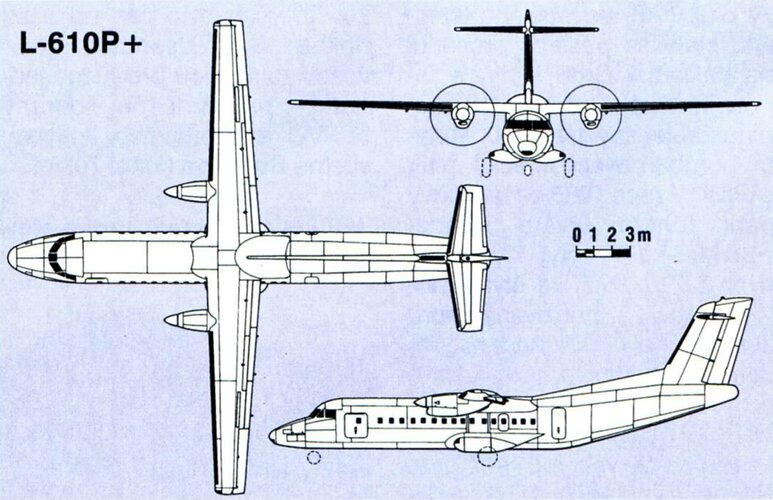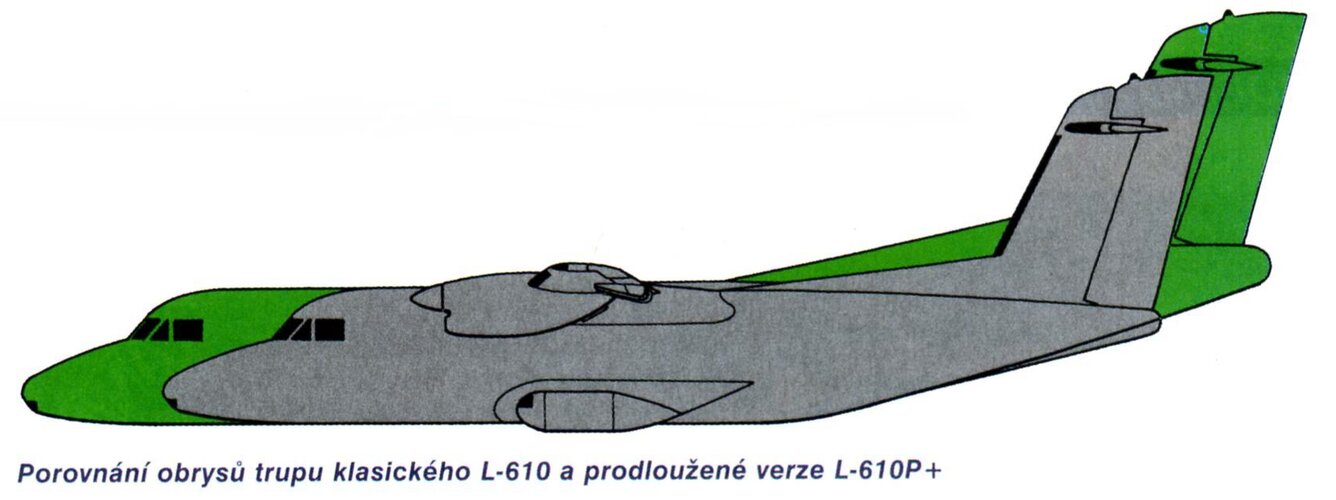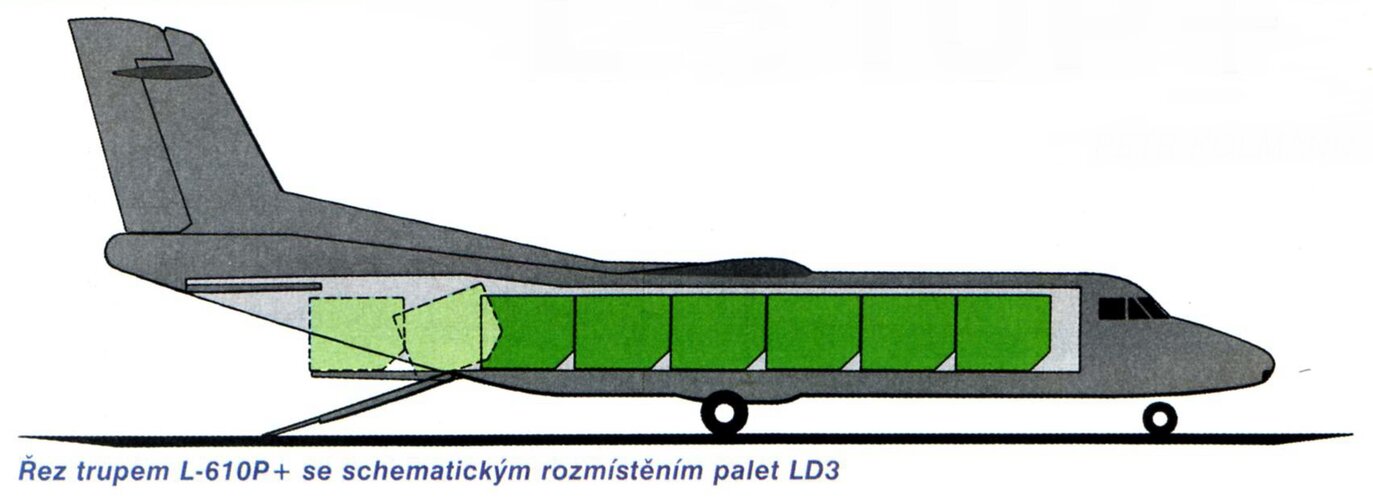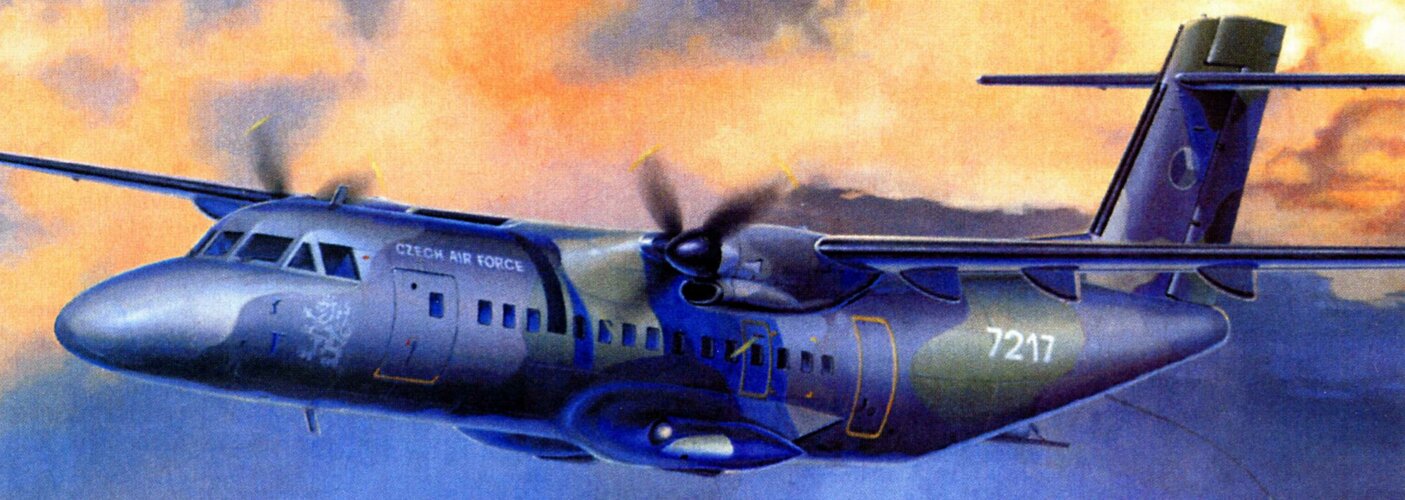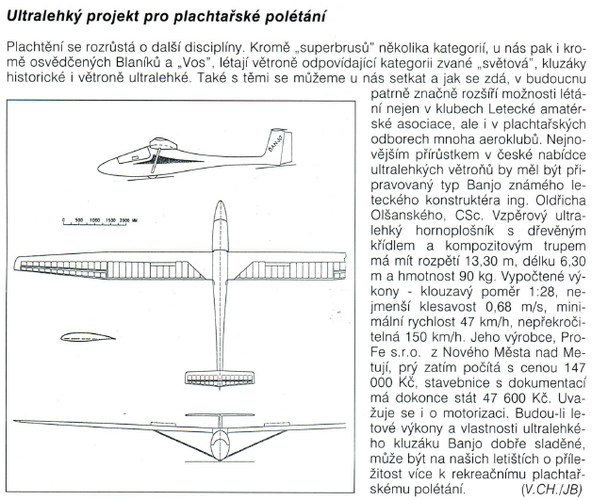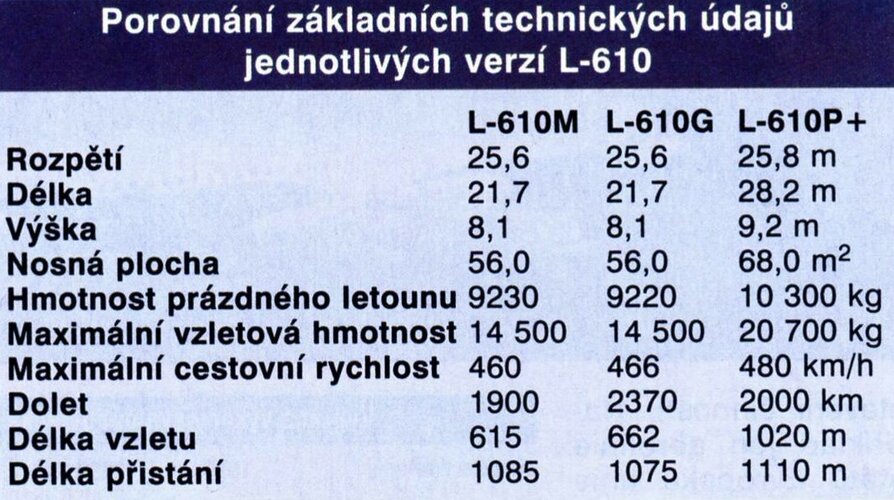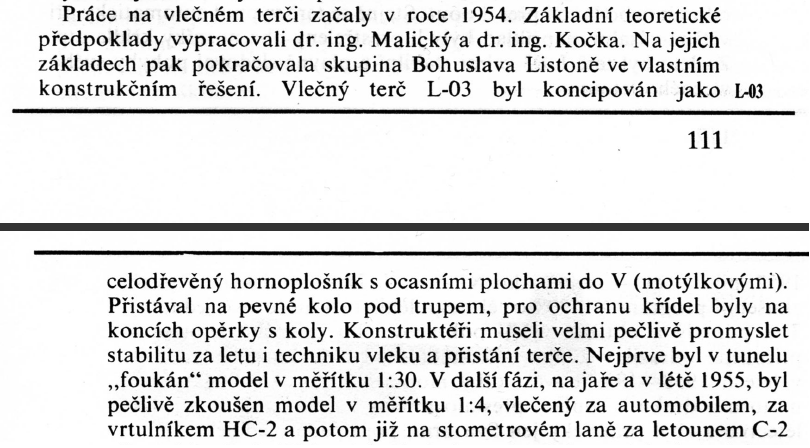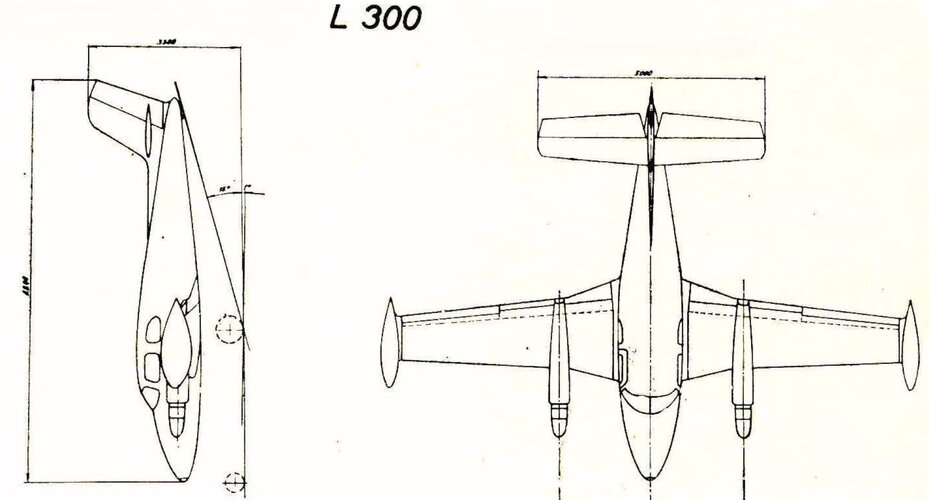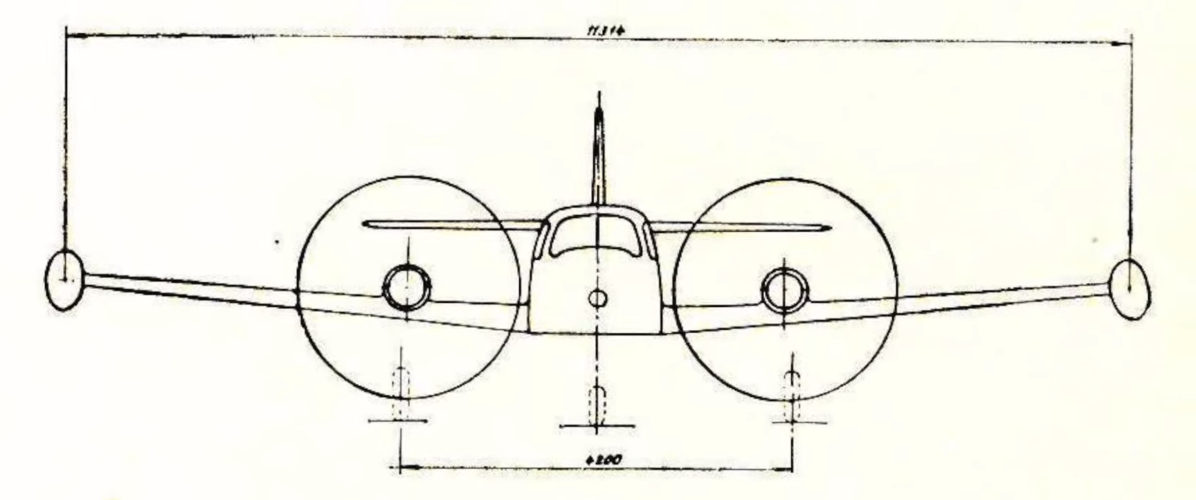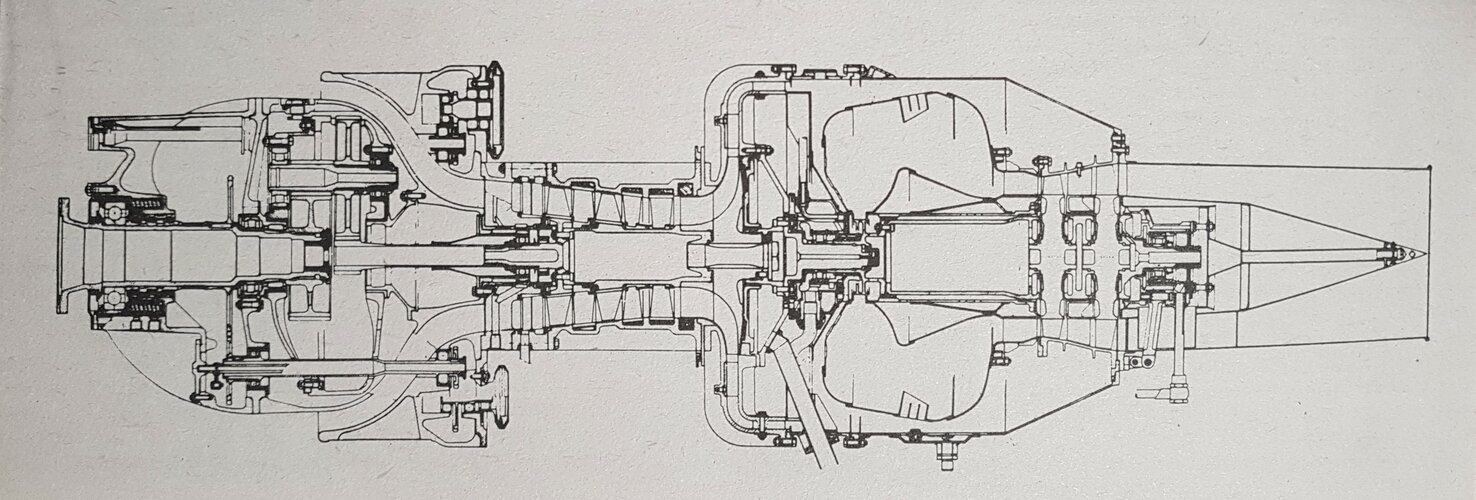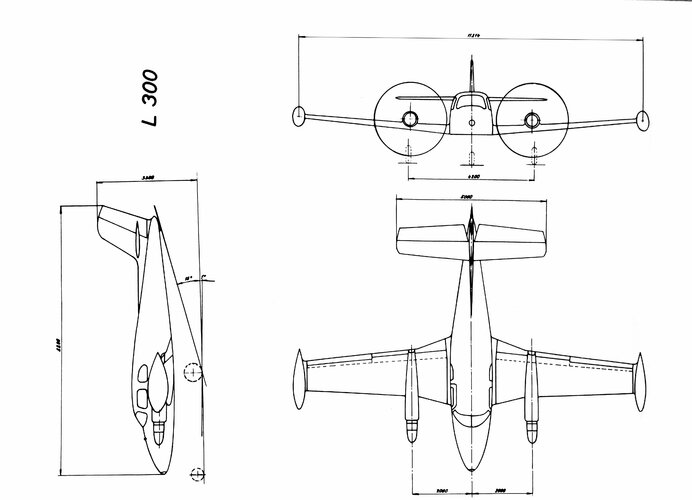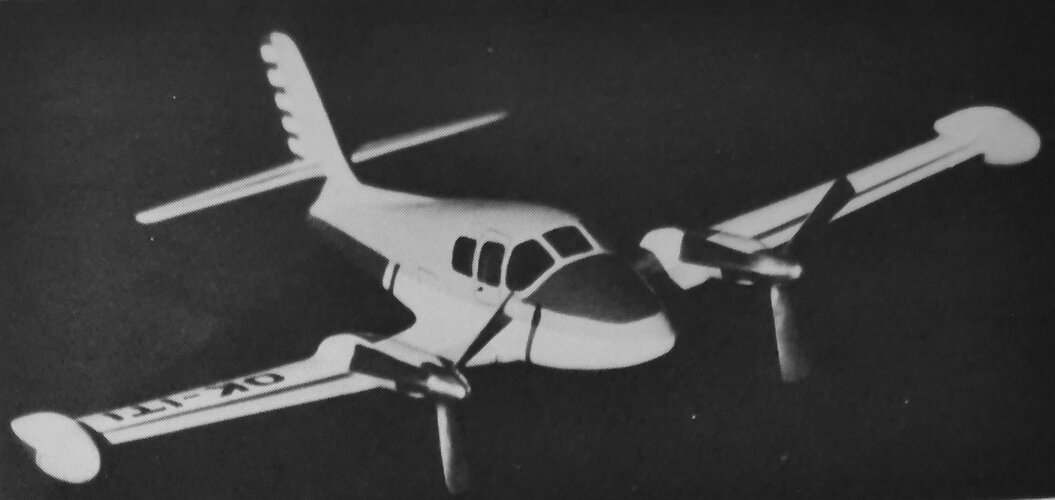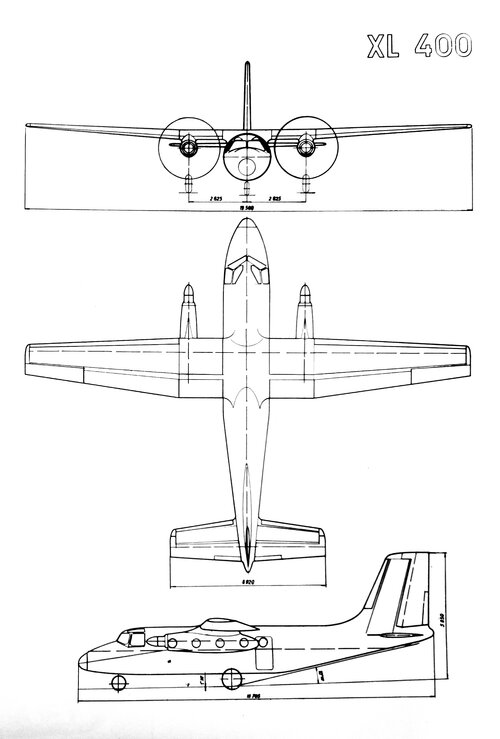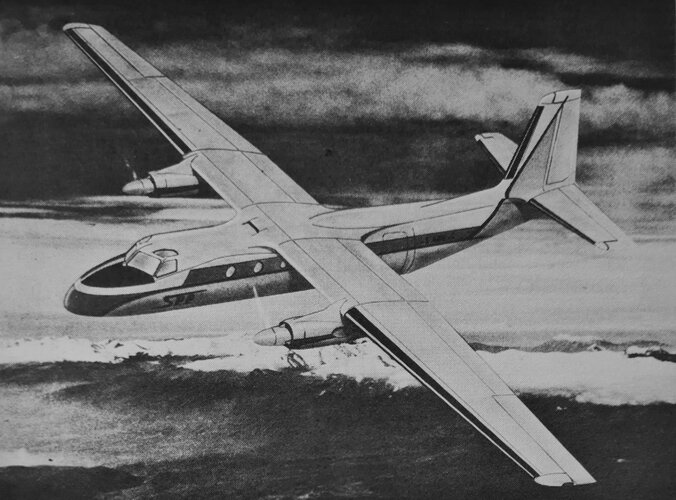Let Kunovice - 'L' Aircraft Designations (to 99)
Let L-13
Blaník - 1956 2-seat high-winged, all-metal glider
- L-13 : Intitial prod'n model, span 16.20 m
- L-13A : 1981-1982 resumed prod., stronger wings, x 20
- L-13A : Renewed production undertaken by Aerotechnik
-- L-13A1: (Llewellyn Modification) life extension
-- Sportine Aviacija SL-2P: Twin-fuselage devel.
- L-13AC: (ACrobatic) Trainer, shorter 14.20 m wings
-- Combines L-13 tail with L-23 cockpit and wings
-- TG-10C
Kestrel ('
Saber') 5 x USAFA
- L-13B :
Bacostroj single-seat motorized glider, x 1
-- 1 x nose-mounted Walter
Mikron IIIA, 48 kW
- L-13J : (JAWA) Motorcycle engine-powered motor glider
-- L-13J : Pylon-mounted JAWA engine above rear fuselage
- XL-13T : (Trabant) motor glider (auto engine conv.)
- L-13TJ : (TJ100) single-seat experimental glider
-- Powered by PBS TJ100 (TJ100A or TJ100C) jet engine
- XL-13M : 1964 OK-6202 motor-glider conv., 1 x Walter A
- XL-13M: Conv. of one of the XL-13 prototypes
- L-13W : (Project) Early '70s motor-glider, Walter
Mikron
-- L-13W: Pursued at Aerotechnik L-13SW (below)
-Aerotechnik*-produced L-13
Vivat variants
-- * Now Evektor-Aerotechnik
- L-13
Vivat: Side-by-side seat motor glider tourer
-- aka Aerotechnik L-13
Vivat, var. engines
-- L-13B Vivat: Aerotechnik vers. of Bacostroj
-- L-13SE : Walter
Mikron IIIAE, air brakes
-- L-13SE Rotax : As L-13SE but w/ 100 hp Rotax 912
-- L-13SL : Std. model, 1 x 67 hp Limbach L200E01
-- L-13ST : 1 x Tatra AT-714, later conv. to Rotax
-- L 13SV : Common German typo for L-13SW (below)
-- L-13SW : Walter
Mikron IIIAE, 3-blade prop
-- L-13SW was later rebranded as L-13SEH
Vivat
-- L-13SDL: L-13SL variant with fixed taildragger u/c
-- L-13SDM: As L-13SDL but with
Mikron IIIAE
-- L-13SEH: Walter
Mikron IIIAE, 3-blade prop
-- L-13SEH is rebranded L-13SW
Vivat (qv)
- L-113 : (Project) 1957 simplified
Blaník
- L-113 : L-13 without flaps or retractable u/c
- L-213 : (Project) 1957 long-span
Blaník
- L-213A: 1992 aerobatic glider using L-13 parts
- L-213A: Dev. begun 1982, moved to Shempp-Hirth Chocen
Let L-14 - L-17: (??) hypothetical designations
Let L-18: (Project) 1955 twin-boomed, light transport a/c
- L-18: Sesquiplane wings, clam-shell door for pod
- L-18: 2 x 700 hp Walter M-446 IV-12s,* span 28.00 m
-- * One prototype to have 2 x Alvis
Leonides Major
-- * Future plans for 2 x 700-850 hp M-481 radials
-- L-18: Main u/c retr. outwards into lower wings**
-- ** Optional skis or twin pontoon float gear
-- 2v:
https://www.gonzoaviation.com/AwEsh...ry/618/muska_Let_l_18__20140610_101905331.jpg
Let L-19 - L-20: (??) hypothetical designations
Let L-21: 1957
Spartak single-seat sailplane
- L-21: High-winged, span 18.0 m, glide ratio 38.0
-- L-21
Spartak proved not a great performer
-- Complaints of tight cabin and poor cockpit view
Let L-22: (??) hypothetical designation
Let L-23
Super Blaník - 1988 2-seat glider
- L-23: L-13 deriv., 2-piece canopy and a T-tail
- L-23: High wing, span 16.20 m,* area 19.20 m²
-- Wing tip extensions available, span 18.20 m
-- aka L-23
Standard, prototype aka X-01
-- Prod'n series L-23s built 1989-2006, x 300
-- TG-10B
Merlin: L-23 for USAF Academy, x 12
- L23NG : (Project) New Generation by Blaník Aircraft CZ sro
-- L23NG: Revised w/ wingLets, impr. fuselage, single canopy
--
http://www.blanik.aero/l23ng-3
Let L-24 - L-32: (??) hypothetical designations
Let L-33 -
Sólo 1992 single-seat sailplane
- L-33: Shoulder-wing, span 14.12 m, area 11.00 m²
- L-33: Intended for trans. from L-13/L-23, x 100+
-- TG-10D
Peregrine: L-33 for USAF Academy, x 4
Let L-34 - L-35: (??) hypothetical designations
Let L-36 - (Project) Low-wing agricultural aircraft
- XL-36: Belly-mounted hopper, abandoned for Z-37
Let L-37 - L-38: (??) hypothetical designations
Let L-39K - (Project) 196? 2-seat military jet trainer
- L-39K: Rival Let design to Aero L-39
Albatros
...
______________________________
Let Kunovice - 'L' Aircraft Designations (from 100)
Let L-110 - (Project) 1995 4-seat low-wing light a/c
- L-110 : Single-engined, all-metal constr. monoplane
- L-110 : Deriv. from
Family-Air design for LOK*
- L-110 : To use
Family-Air parts & subassemblies
-- * Letecke Opravny Kbely, former state-owned MRO firm**
-- ** Sep. Family-Air, spol. s ro formed on 09 Sept 1993
Let L-113 - (Project) 1957 simplified
Blaník
- L-113 : See L-13 without flaps or retractable u/c
...
Let L-145: Orig. internal designation for Ae-45S (qv)
- L-145: Marketed as the Ae-45S
Super Aero
-- NB: L-145 is
not the same as supercharged Ae-145
...
Let L-200
Morava - produced 361 planes in 1957-1964.
- L-200: Low-winged twin-engined, twin-fin light a/c
- XL-200: 1st prototype (aka XL-001, OK-LNA) flew 09 April 1957
- L-200 : 2nd prototype (aka XL-03, OK-LNB), becomes E-33
- L-200 : Pre-production series (for CSA & CzAF), x 10
- 2 x 160 hp Walter (MotorLet)
Minor 6-III, span 12.31 m
- L-200A : 1960, 2 x 210 hp MotorLet M-337, span 12.31 m, x 150
-- L-200A had 2-blade electrically-adjustable V 410 props
- L-200B : (Project) L-200A evol., abandoned for L-200D
- L-200C : (Project) UK airworthiness cert'd L-200A
- L-200D : 1961, 2 x MotorLet M-337Š, span 12.31 m, x 39
-- L-200D engines had 3-blade constant-speed V 506 propellers
- L-200 Libis: L-100D CKD kits supplied to LIBIS, Ljubljana
- L-200P : (Project)
Ponton, twin-float L-200A deriv.
-- Cantilever struts to mate 6.38 m floats to nacelles
-- 3v:
https://www.gonzoaviation.com/AwEsh...lavakova_morava_vykres_20140527_041524581.jpg
-- E-33: Experimental
Morava with various tail types*
-- * Cruciform tail (in photos), T-tail also mentioned
-- E-33 fitted w/ 2nd engine** for boundary layer exper.
-- ** 1 x 325 hp Walter M-108DHK driving M-42's blower
-- ** Dorsal intake for M-108DHK was above rear cabin
--
https://www.secretprojects.co.uk/threads/Letov-aviation-plant-wolfsberg-projects.11242/#post-278940
Let L-201 - Orig. (alternative?) desig. for L-210 (OK-PHB)
Let L-210 - 1966 6-seat L-200D*
Morava derivative
- L-210 : Mod. & re-engined L-200D, x 1 conv. (OK-PHB)
- L-210 : 2 x 245 hp MotorLet M-338, span 12.31 m
-- * 5th pax seat centred behind central rear backrest
-- L-210 not certified, reconv. to L-200D in early '70s
Let L-213 - 1957 long-span
Blaník, realized as L-213A
- L-213 : (Project) 1957 aerobatic glider, not pursued
- L-213A: 1992 aerobatic glider using standard L-13 parts
- L-213A: Dev. begun 1982, moved to Shempp-Hirth Chocen
Let L-300 - (Project) 1958 L-200D Morava turboprop deriv.
- L-300 : Slightly-enlarged 9-11-seat air-taxi L-200 devel.
- L-300 : 2 x 690 shp Walter M601B turboprops,* span 11.34 m
-- Pressurized fuselage, 2 x wing configurations considered
- L-300D: (
Dolnoplošník) Low-winged config., pilot + 8 pax
- L-300H: (
Hornoplošník) High-winged config., pilot + 10 pax
-- See description/3-view in reply #24 by
Sarastro
-- * Prod. M601B shp; L-300D 3-view shows Turbomeca
Astazou
Let L-400 - (Project) 196? turboprop feederliner study
- L-400: Twin-turboprop, high-winged, 12 pax transport
- L-400: 2 x 900 shp Turbomeca
Astazou, span ?? m
-- Said by Jaroslav Dostál to resemble H.P.
Herald
Let L-410 -
Turbolet twin-turboprop transport, ~1,200
- L-410: Light transport for Soviet & domestic requir.
- L-410: Orig. design from a line of studies/projects
- L-410 : 1965 (Project) Studies for Antonov An-2 repl.
- L-410 : 1969 high-wing, turboprop transport, retr. u/c
- XL-410: 1st prototype, flew 16 April 1969, aka L-410
- L-410 : Prototypes (x 3), 2 x 715 shp P&WC PT6A-27s
- L-410 : Slightly shorter/less span than prod. L-410A
- L-410 : No.1 had 3-bladed Hamilton-Standard props
- L-410 : Nos.2 & 3, quieter 4-bladed Hartzell props
- L-410A: 1971 prod., 2 x 715 shp P&WC PT6A-27s, x 12
- L-410A: 2 x 715 shp P&WC PT6A-27s, span 17.48 m
- L-410AB: 2nd prototype L-410A, 4-blade Hartzell props
- L-410AB: Displayed at 1971 Le Bourget Paris Air Show
- L-410AC: Common typo for Soviet eval'n L-410S (qv)
- L-410AF: 1974 aerial survey type, glazed nose, x 1
- L-410AG: 4th prototype, UK BCAR airworthiness stds.
- L-410AM: Vers. w/ M601Bs, same as L-410MA (qv) or L-410MU
- L-410AS: Trials aircraft, supplied to the USSR, x 5
- L-410FG: 1985 aerial survey variant for CzAF, x 6
- L-410FG: Glazed nose, 2 x 740 shp Walter M-601D
--
https://www.valka.cz/attachments/1945/L410FG1526_1.jpg
- L-410M: 1973, 2 x 735 shp* Motorlet M601A, x 109
-- * Many sources list 740 shp for Motorlet M601A
- L-410M: 17 pax East Bloc model, Avia V 508A props
- L-410MA: 1973, 2 x 760 shp M-601Bs with V 508B props
- L-410MA: Alternative des. (or typo?) was 'L-410AM'
- L-410MU: 1978, auto roll-control vers. for Aeroflot
- L-410UVP: 1977 shorter take-off vers. for Aeroflot
-- UVP =
Ukorochennaya vzlot-posadka or STOL
- L-410UVP: Lengthened (0.86 m), longer span (19.48 m)
- L-410UVP: 3 prototypes/1st series, Motorlet M-601Bs
- L-410UVP: 1983 2nd series, M-601Ds w/ V 508D props
- L-410UVP: 2 x 690 shp Motorlet M601D, span 19.48 m
- L-410UVP: 0.86 m longer/+2.01 m span/tail dihedral
-- L-410UVP offered as 15 pax/freighter/6+5 medevac/
-- 14 paratroop/12 fire control/photogram/navaid, etc.
- L-410UVP: (Project) Mid-'80s trimotor deriv., unbuilt
- L-410UVP-E: 1986, 750 shp Motorlet M-601E, span 19.48 m
- L-410UVP-E: 5-blade Avia V 510 props, wingtip tanks
-- NB: 'UVP-E sub-type mods have run from 'E1 to 'E20
- L-410UVP-E1 : (no details)
- L-410UVP-E3 : 1989, M-601Es, pilot/navigator trainer
- L-410UVP-E4 : (no details)
- L-410UVP-E8 : (no details)
- L-410UVP-E9 : Equipment changes for Western markets
- L-410UVP-E10: (no details)
- L-410UVP-E13: (no details)
- L-410UVP-E14: (no details)
- L-410UVP-E15: (no details)
- L-410UVP-E16: (no details)
- L-410UVP-E17: (no details)
- L-410UVP-E18: (no details)
- L-410UVP-EA : (no details) poss. confusion with 'E4
- L-410UVP-EZ : Pilot/navigator trainer w/ 'E20 upgrades
-- Currently 2 x GE H80-200/AV 725 props as per L410NG
-- NB: Walter M-601H-80 development became GE's H80
- L-410UVP-EZ : Poss. conf. w/ 'E3 or
z (follow)
- L-410UVP-E20: 2008 Westernized vers., US FAR-23 stds.
- L-410UVP-E20: Certified as the L-420E (below, qv)
- L-410UVP-S: (Salon) VIP UVP, upward-hinged cabin door
- L-410UVP-V: 1986 '
Vstavka' stretched, 22 pax L-410
--
Vstavka translates from Russian as 'insert'
- L-410UVP-V: 2 x 775 shp Motorlet M-601F, span 19.48 m
- L-410UVP-V: Prototype only, not put into production
- L-410T:
Transport 1982, CzAF, enl. cargo door**
-- ** Door measures 1.25 m x 1.46 m, 1,000 kg containers
- L-410T : Alt., 12 paratroops or 6 stretcher medevac
- L-410(??): (Project) Simplified L-410 concept for Soviets
- L-410(??): 12 pax, mod. fuselage, T-tail, fixed u/c
- L-410(??): 2 x ??? shp Glushenkov TV-10s, span ?? m
- L-410(??): (Project) Single-engined L-410 deriv.
- L-410(??): Nose turboprop, fixed undercarriage
-- Intended as Let Kunovice's rival to Aero Ae-270
- L-410NG: (New Generation) 2015 L-410 update variant
- L-410NG: 2 x 800 shp GE H80-200s,*** span 19.48 m
-- *** H-80s are updated M-601s, 850 shp for prod'n
- Ayres LM-200
Loadmaster: Utility w/ L-410 parts
Let L-420 - (Project) 196? study towards
Turbolet
- L-420 : (1) Commuterliner study led to L-410
- L-420 : 2 x ?? shp Turbomeca
Astazous, span ??
Let L-420 - (Project) 198? cargo variant of L-410
- L-420 : (2) Dedicated cargo-carrier
Turbolet
- L-420 Cargo: Dedicated cargo-carrier
Turbolet
Let L-420 - 199? Westernized L-410
Turbolet deriv.
- L-420 : (3) 17-to-19 pax, US certification May 1998
- L-420 : (3) 2 x 775 shp Walter M-601F, span 19.98 m
- L-420 Cargo: Freighter, Fairchild/FedEx co-venture
- L-420E: 'E' for Extended (referring to the nose)
- L-420E: Certified as L-410 UVP-E20, 2 x Walter M601Fs
- L-420 XXL: Stretched L-410/L-420 Cargo development
Let L-430 - (Project) 199? stretched L-410 devel.
- L-430: 2 x ??? shp P&WC PT6A-?? turboprops, span ??
-- L-430 to be highest TOW variant of L-410 family
Let L-440 - (??) hypthetical designation
Let L-450 - (Project) 199? Let L-410 replacement a/c
- L-450: L-410 development or replacement project
- L-450: Alt. desig. for L-510P (Jaroslav Dostál)
-- Most closely resembled orig. 'L-410 replacement'
-- Above suggests an earlier design phase of L-510
(To be continued ...)
_____________________________

